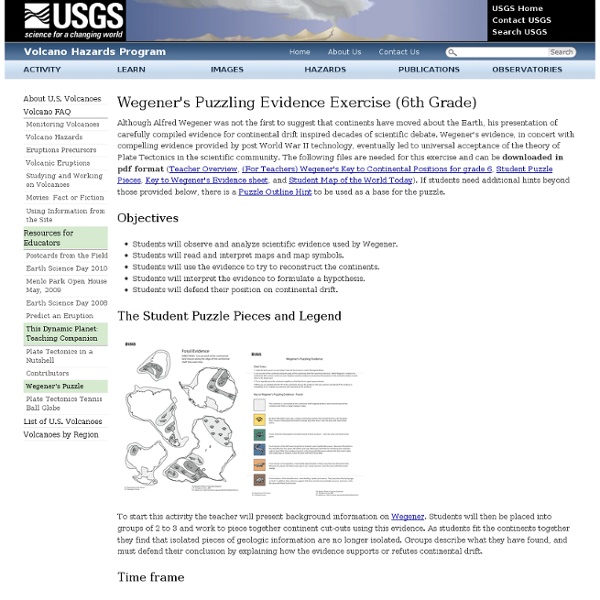Wegener's Puzzling Evidence Exercise (6th Grade)

This Dynamic Earth--Contents [USGS]
View of the planet Earth from the Apollo spacecraft. The Red Sea, which separates Saudi Arabia from the continent of Africa, is clearly visible at the top. (Photograph courtesy of NASA.) Ordering Instructions This book was originally published in paper form in February 1996 (design and coordination by Martha Kiger; illustrations and production by Jane Russell). U.S. or it can be ordered directly from the U.S. Call toll-free 1-888-ASK-USGS Or write to USGS Information Services Box 25286, Building 810 Denver Federal Center Denver, CO 80225 303-202-4700; Fax 303-202-4693 Version History Version 1.20 The online edition contains all text from the original book in its entirety. Linked Websites Please visit the Smithsonian Institution This Dynamic Planet website. See also This Dynamic Planet, the map showing the Earth's physiographic features, current plate movements, and locations of volcanoes, earthquakes, and impact craters.
Guesthollow.com - Homeschool Curriculum, Printables & Resources
Click here to return to our main notebooking printables page. All printables in this section require free Adobe Acrobat Reader. These lapbooking downloads are our gift to you. For information about lapbooking and links to more freebies, please visit Jimmie's excellent Squidoo lens! Some of the graphics in this pack were purchased from and © 2008 Jupiter Images, the rest are hand-made by me. ;-)
Related:
Related:



